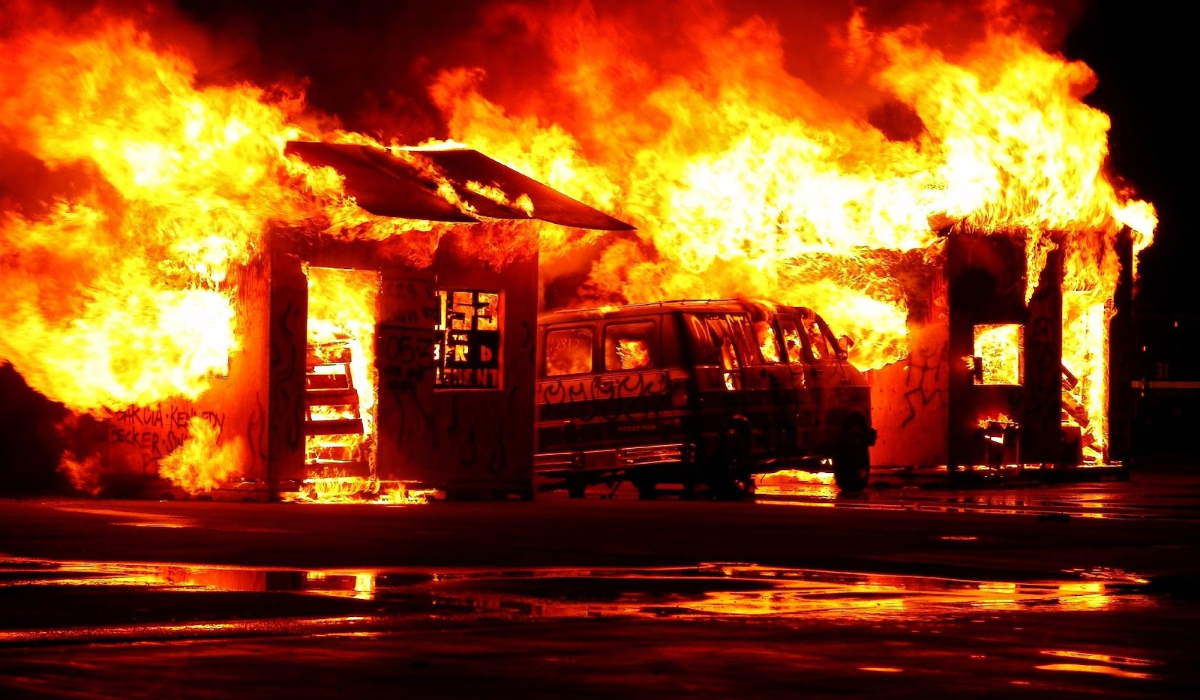Every year, California wildfires force residents to temporarily evacuate their homes and seek refuge in shelters, motels, or with relatives. While the wildfire season is one of the few things that truly unites both Northern and Southern California, it’s also not a new phenomenon: you can track over a century of California wildfires recorded by Cal Fire as part of a California Public Radio Project.
Lately, California’s wildfire season is becoming a national headline as the state battles its worst-ever blazes in the century and a half since the state began recording. Not only does the season last longer but it’s more deadly: 150 people have died in California since 2015, which is the same number of people killed across the previous 82 years before it. With all of that said – how are these wildfire seasons being stoked by the changing weather patterns of climate change?
California’s Wildfire Season Now Lasts All Year

A typical California wildfire season lasts between the early summer and late autumn months, but it has no fixed calendar. It occurs when the humidity hits the floor just as the hot winds come screeching in from the desert via the state’s mountain passes. When there’s enough dry fuel, the fires start, and they continue to burn until the winter rains come in.
Californians accept that wildfires – along with earthquakes and painful droughts – are a part of life if they want to live in one of the most scenic and wealthiest states in the nation. It’s the price residents pay for good weather and access to the wealth found in the Los Angeles and San Francisco metro areas. Lately, however, the price that state residents pay has soared. As fires burn longer and more intensely, some residents wonder whether the risk of losing it all is worthwhile.
Part of the issue is human made – people know they live in an area plagued by seasonal wildfires, and moving into dry parts of the state filled with potential fuel and bringing power lines with them doesn’t do them any favors. The issue of the state’s failure to invest in power lines that don’t spark with a gust of wind has also proven to be destructive – power lines and other equipment have been the source of over 2,000 wildfires since 2014 alone, and seven of 10 of the most destructive fires in state history were the product of downed or sparking power lines.
But with so many factors already putting residents at risk, a newer and equally human-made factor could exacerbate old problems and create new ones.
How Climate Change Could Be Partly to Blame
Lately, California’s wildfire season lasts longer than ever before. While scientists are always reluctant to link a specific event or disaster to climate change, the continuing intensity that may be the state’s new normal is very likely the product of the warming atmosphere.
While the rest of the world warmed by a global average of one degree Fahrenheit over the past century, California’s core temperature grew by three degrees. This hotter air causes plants and soil to dry out faster, which makes the grasslands and trees across the state the perfect fuel for seasonal fires. The moisture in vegetation and soil is how the state predicts the beginning and end of its season.
The phenomenon isn’t just an issue in California, either. Climate change is also fueling the historic wildfires plaguing Sweden, Finland, Latvia, Greece, Portugal, and Spain.
California is Trying to Combat Climate Change
Given that California has warmed three times faster than the global average, it should come as no surprise that California is leading the fight against further warming. After all, every degree the temperature rises cause vegetation to dry out at an even faster pace, therefore extending the wildfire season every year. The state’s response isn’t just a response to last year’s fires alone, either – California passed the Global Warming Solutions Act of 2006 (AB 32) over a decade ago to officially limit the state’s greenhouse gas emissions.
At the same time, California is now encountering resistance from the executive branch. When California tried to set stricter auto emissions limits, the White House stepped in and said no. Cutting vehicle-generated emissions is a huge issue for the state: it not only contributes to global warming but also to the raging air pollution that chokes the major cities of San Francisco and LA.
However, managing emissions isn’t the state’s only tactic. California’s famous droughts are a part of life, but the state also considers water management to be at the forefront of the way it deals with climate change. A combination of both the public and private focus on sustainability will help California’s water grid as it prepares to grapple with the volatile climate that is quickly arriving.
Wildfires Could Get Worse, But There Is Hope
Californians are facing the perfect storm of elements that all directly contribute to longer, more deadly wildfire seasons. Unfortunately, there’s only so much the state can do to battle them on its own.
Even as the California Department of Forestry and Fire Protection pilots new prevention projects, it won’t turn back the clock on the warmer climate that provides seemingly endless fuel. And even California’s attempts to stem emissions and slow warming won’t stop the rest of the U.S. from reintroducing coal and rolling back further protections.
For now, Californians can only do what they can do, but everyone else – from the citizens to the power companies to the government – has a role to play.
Thousands of firefighters have been battling wildfires across California, after warm temperatures, strong winds, and low humidity turned the state into a ‘tinderbox’. So is this the new normal?
- Miracle Drug or Snake Oil? How Consumers Can Tell the Difference - August 15, 2022
- Why Renewable Energy is a Geopolitical Issue - March 16, 2022
- Sustainable Trends in Manufacturing and Construction - January 28, 2022
